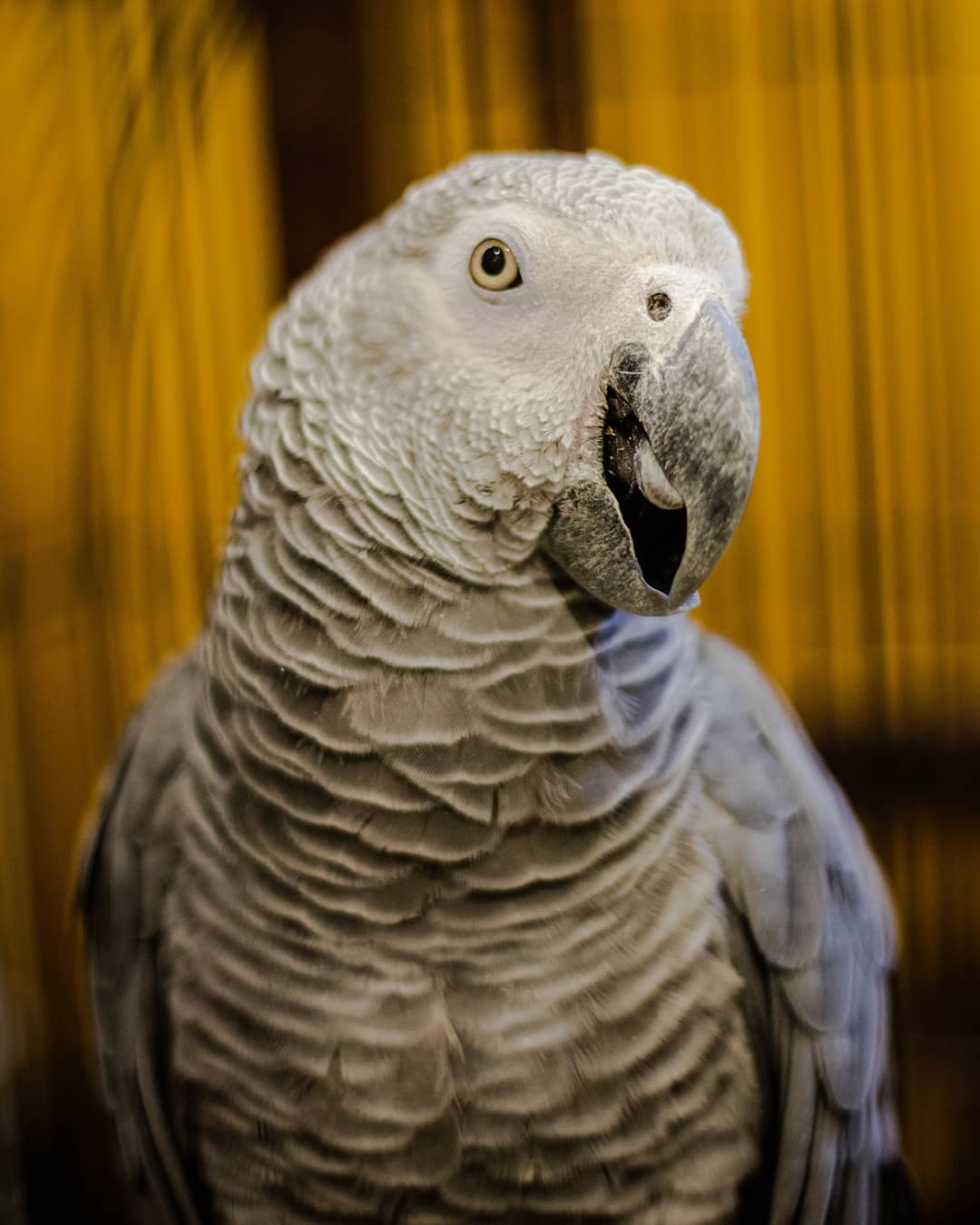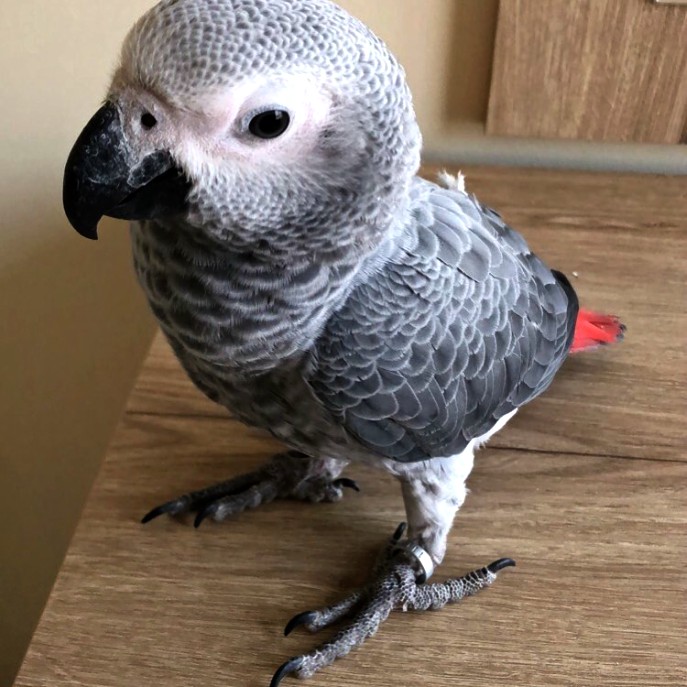
Nutrition is frequently overlooked with pet birds. You must review your bird’s nutrition with your veterinarian! Too often, homeowners believe they are providing their African gray a proper diet when, in reality, they are not.
What My African Grey Eats?
African Grey Feeding
Poor nutrition can often lead to various health problems. Bird owners should consistently strive to improve their birds’ diets. This involves continuously educating themselves about the latest recommendations in proper nutrition, which a veterinarian experienced in bird care can assist with. Just like humans, birds can survive on low-quality food, but the goal should be to help our birds thrive and flourish, not just survive. A bird’s health, much like ours, greatly depends on how well it is fed.
What will my African gray parrot naturally eat?
African gray parrots eat a range of seeds, nuts, fruits, berries and vegetation within the wild. they’re going to clamber from branch to branch whereas feeding rather than flying. They particularly treasure the fruits of the African feather palm, tree native to their atmosphere.
What ought to I feed my African gray parrot?
African greys area unit susceptible to each metallic element and axerophthol deficiencies and to avoirdupois. Feeding a well- diet can facilitate forestall the event of those conditions.
“African Greys area unit susceptible to metallic element and axerophthol deficiencies and to obesity”
Seeds
Although wild African gray parrots have access to seeds all year spherical, the categories of seeds they go after modification throughout the year, as totally different plants get season.
Commercial seed mixes provided to many captive parrots are often high in fat and lacking in essential nutrients. If these mixes are the only source of food, African grey parrots can become ill and may even die prematurely. To make matters worse, birds often pick through a large bowl of commercial seed mix and selectively eat one or two ‘favorite’ types of seeds, further limiting their nutrient intake.
They usually preferentially select peanuts and flower seeds that area unit notably high in fat and deficient in metallic element, vitamin A, and different nutrients. Their selective craving will more incline them to deficiency disease.
Seeds should only be a small part of a bird’s diet and should never be the entire diet. Additionally, only a few nuts should be offered daily. By gradually providing fewer seeds and replacing them with more nutritious options, your bird will start eating a variety of foods.
Pelleted Diets
Pelleted diets available commercially are designed to meet all of a bird’s nutritional needs. Different formulations are available for various life stages and for managing certain diseases.
There are many reputable brands of pelleted foods available in the market, designed to cater to the preferences of various birds with different flavors, colors, shapes, and sizes. Hand-raised chicks should be introduced to a pelleted diet immediately.
Pellets are considered the optimal food and should ideally constitute approximately 75-80% of a bird’s diet. The remainder of the diet should consist of fresh fruits and vegetables, with very limited seeds, if any. Transitioning a seed-eating bird to a pelleted diet can take weeks to months and may sometimes be challenging. Owners should gradually wean seed-eating birds onto a pelleted formulation.
Consulting with a veterinarian experienced in bird behavior and nutrition can be very helpful in converting a stubborn bird from seeds to pellets.

How do I convert my bird to a pelleted diet?
Converting seed-eating birds to formulated diets can be challenging. Initially, they may not recognize pellets as food. Birds should be gradually weaned off seeds over a period of 4-8 weeks, with pellets always available in a separate dish. Mixing pellets with seeds is generally not an effective method for transitioning birds to pellets, as they will preferentially pick out the seeds, leaving the pellets behind. It may take days, weeks, or even months to successfully change a bird’s diet
NEVER withdraw seeds entirely while not 1st being bound the bird is attempting the pellets, additionally as feeding some fruits and vegetables.
Monitoring the bird’s weight on a digital scale that measures in 1-gram increments is also a way for owners to ensure that birds are maintaining their weight during the transition. Birds can be stubborn, but they can be trained. While transitioning a seed-addicted bird to a pelleted diet can be challenging for both you and your bird, with proper guidance from a knowledgeable veterinarian, you will ultimately be able to improve your bird’s nutrition.
“Remember that you simply train the bird; don’t let it train you.”
Consult your medico if you encounter any issues with this transition or with the health of your bird.
Remember that you simply train the bird; don’t let it train you.
Fruits and Vegetables
Fruits, vegetables, and greens should make up about twenty to twenty-five percent of your bird’s daily diet. Pale vegetables with a high water content (such as iceberg lettuce, or celery) have little to no nutritional value. Avocado is rumored to be venomous and should never be offered to birds. Orange, red, and yellow vegetables, such as squash, peppers, carrots, and sweet potatoes, provide vitamin A, which is needed for birds’ systems, kidneys, skin, and feathers, and are excellent choices for feeding birds.
Fruits and vegetables should be washed completely to get rid of chemicals before feeding them. Cut them into manageable items acceptable to the dimensions of the bird. it’s not necessary to require the skin off. provide fruits and vegetables during a separate dish. If your bird seems to develop specific|a specific|a selected} fancy for one particular food item, cut back its volume or stop feeding it quickly to push the consumption of different foods.
Treat your bird like a small child; offer a small piece of a variety of food items daily, and even if it rejects the item once or twice, don’t give up. It may take several exposures to a new food before a bird accepts it. Maintaining a well-balanced diet at all times is essential to promote your bird’s health and longevity.
Water
Fresh, clean water should be available in the least amount of time. Depending on the quality of your water, you may consider using filtered or drinking water. Every day, use soap and water to thoroughly clean your dishes.

What do parrots eat?
In general, whatever nutritious, healthful food that you and your family eat will be consumed in very small quantities by your bird. Follow the final pointers provided above, and use your best judgment. Some birds enjoy eating a small amount of lean-boiled meat, fish, eggs, or cheese on occasion. Because birds are lactose intolerant, they must only be fed agricultural produce on rare occasions and in extremely small quantities.
High-fat foods (French fries, pizza, fatty meats), excessively salty foods (chips, pretzels), chocolate, caffeine-containing products, and alcoholic beverages should be avoided.
Will my bird have completely diverse desires throughout its life?
Birds that are extremely young, stressed, damaged, laying eggs, or raising young may have particular nutritional requirements. There are pelleted feeds specifically designed for birds with these types of unique nutritional needs. Consult your doctor about these items.
Does my bird require additional vitamins, minerals, or amino acids?
Your veterinarian will assist you in determining your bird’s diet and explicit desires. A bird that consumes 75-80% of its meal in the form of pelleted food rarely requires supplements. Pellets are designed to be nutritionally complete. Specific vitamins or minerals may also be extremely required at various stages of a bird’s life.
Birds that are not being fed pelleted diets can be supplemented until their nutrition improves. Fine-grained supplements are generally thought to be very stable. These supplements should not be given with water since many of them break down in water or promote bacterial or yeast growth. They will be added directly to wet food; but, to learn from these supplements, birds must ingest the entire wet food item.
Inserting these powders into seeds or dried meals is pointless because they will eventually rattle down the dry item or fall off the seed. After all, the bird removes the seed’s shell before consuming it. Ideally, supplements should only be provided for certain health conditions, under the supervision of a doctor, or when a bird is on an all-seed diet. They must be removed once a bird has converted to a nutritionally complete pellet.
Does my bird want gravel or grit?
Parrots, like African greys, avoid gravel and grit. Grit aids birds who swallow whole seeds (hull and kernel) in grinding and digesting them in their gizzards (part of the stomach). While birds such as pigeons and doves consume seeds whole, parrots remove the seed husk before eating the seed. Thus, they do not require grit or gravel. Certain birds provided grit can overconsume it, resulting in undoubtedly severe canal clogs.
Grit is frequently applied to sandpaper perches to assist keep nails worn down. Birds may also prefer dirt from these perches, which results in viscous collisions. Therefore, even sandpaper perches should be avoided.
- What suggestions should I keep in mind when feeding my African grey?
Always keep track of how much food each bird consumes daily. - Offer water every day.
- Make pelleted food the idea of the diet (75-80%).
- Offer recent fruits and vegetables each day, limiting their consumption to no over twenty-fifth of the diet.
- Clean all food and water dishes daily with hot cleaner water, and allow them to dry completely before mistreatment them.
A bird voice communication no to a food item at some unspecified time in the future doesn’t mean no forever – KEEP TRYING!
Some prompt food things to supply include:
Apple cherries (without the pit) Pear Apricots Chinese vegetables (Bok Choy) Peas and asparagus Coconut peppers (red, green, and spicy) Banana corn
Pineapple beans (cooked Cucumber, plum, and chickpeas Blow ball leaves.
Dates of the pomegranate excretory organ Potato lentils. Endive pumpkin. Lima fig, rapini, leguminous plant, grapes, raspberry, navy grapefruit, rice (brown). Soy kale. lettuce lettuce Seeds for beets, kiwis, spinach, blueberries, and melons Broccoli, mango squash, Brussels sprouts, and nectarines Strawberry, cabbage, and orange Sweet Potato Cantaloupe papaya tomato carrot parsnip zucchini carrot hyper peaches
Contributors: Rick Axelson, DVM; Updated by Laurie Hess, DVM
© Copyright 2016 Lifelearn Iraqi National Congress. Used and/or changed with permission beneath license.

Leave a Reply